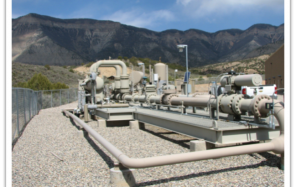Advantages of Energy Deregulation

In this article, we discuss 11 different advantages of energy deregulation.
Find the “Right” Product
Purchasing energy through the utility is only offered as an indexed product. The utility either generates or purchases the supply and charges a fee and the price fluctuates with the market. For instance, natural gas demand is much higher in the winter in the Northeast and prices typically rise with demand. Purchasing energy from a competitive supplier allows the end-user to manage rate fluctuation exposure and choose a product that fits savings goals and risk tolerance.
Lower Energy Costs
Many professionals are able to lower overall energy costs for their facilities by finding the right product and purchasing competitive supply. In some cases, the savings are significant and can make a direct positive bottom-line impact for the customer. Typical supply side savings are in the 10-20% range (based on utility rates at the time end-user enters into a competitive supply contract).
Price Certainty
Fixed price products decrease rate volatility and hedge against future pricing increases. The supply rate charged by the utility is a variable rate and can fluctuate based on many factors that affect the supply cost. Customers electing a fixed price product will eliminate rate fluctuations during the contract term.
Flexibility
Deregulation has created products of all shapes and sizes depending on the unique needs for a particular facility. Unlike purchasing supply from the utility in a one size fits all product, competitive purchasing allows the end-user to create a forward thinking energy purchasing strategy.
Reliability
The reliability of your electricity does not change because you take advantage of deregulation. The infrastructure that transmits and distributes the energy is still handled and guaranteed by the regulated utility regardless of where you purchase the supply. You still contact the utility if the power goes out in a storm or if you have questions about your bill.
Products and Contract Terms
Prior to deregulation, utilities charged a monthly rate and the customer paid whatever the utility charges (usually determined by costs plus a fee). Deregulation has delivered a wide range of products and terms for the customer to choose from. The influx of new products also creates risk for the end-user because you could potentially choose a product that costs rather than saves money depending on unique energy needs. Many end-users enlist a broker to find the best product, term and pricing. Such options include:
Fixed Pricing
The rate is fixed for the duration of the contract. The options for fixed pricing include “all-in” or “energy only” contracts. Fixed pricing requires forward-looking intelligence to determine where the energy market is today and where it is expected to go throughout the term of the contract.
Index Pricing
An index pricing structure is essentially how the utility charges customers for supply. The pricing is an index price plus a supplier adder. Customers can typically purchase an index product through competitive markets at a rate lower than the rate charged by the utility.
Discount
A discount rate floats with the utility, but is discounted a certain percentage. Other pricing mechanisms that are advantageous to particular customers based on usage profile: “block and index”, “caps” and “collars”.
Terms
The contract term is a key component for any deregulated supply contract. Customers should carefully analyze forward-looking energy pricing estimates before locking into a long-term contract. All supplier quotes should provide pricing for multiple terms: 6 months, 12 months, 24 months, 36 months etc. Pricing for multiple term lengths will also provide insight into how the utilities view future energy pricing forecasts.
Options
An option contract gives customers the ability to lock into a fixed price per KWH contract to reflect current pricing at any time during a variable price contract.




